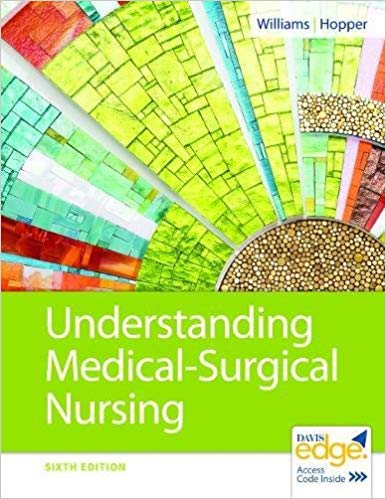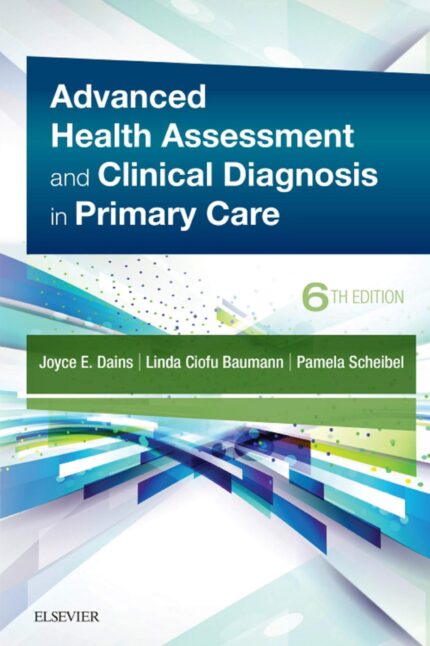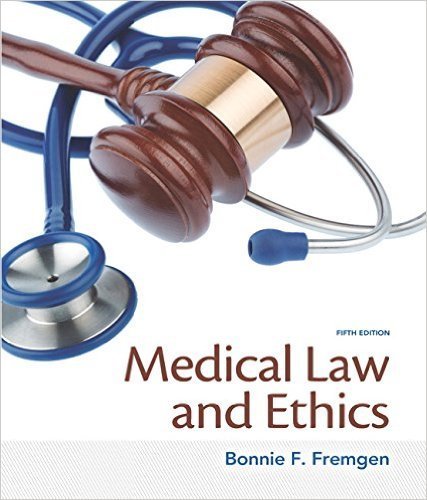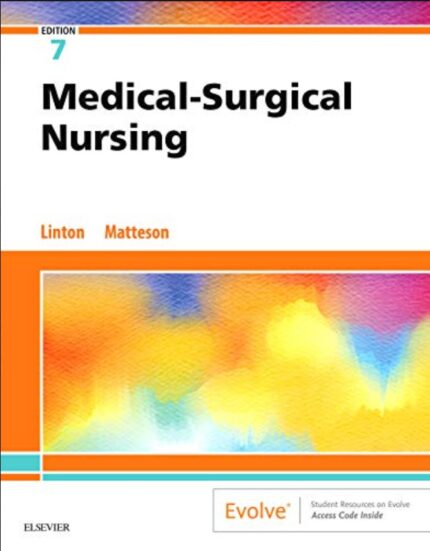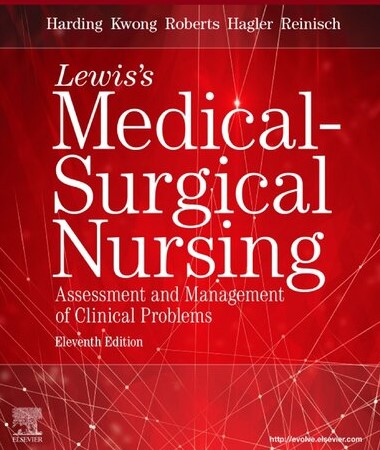Test Bank for Understanding Medical-Surgical Nursing 6th Edition Williams
ISBN-10: 0803668988, ISBN-13: 9780803668980
Chapter 1. Critical Thinking and the Nursing Process
MULTIPLE CHOICE
1. The nurse is caring for a group of patients on a medical-surgical unit. Which patient should
the licensed practical nurse/licensed vocational nurse (LPN/LVN) assess first?
1. A patient with a blood glucose of 42 mg/dL
2. A patient who reports a pain level of 2
3. A patient who has just received a diagnosis of cancer
4. A patient who has a respiratory rate of 22
ANS: 1
Chapter: Chapter 1 Critical Thinking and the Nursing Process
Objective: 7. Prioritize patient care activities based on the Maslow hierarchy of human
needs.
Pages: 6–7
Heading: Prioritize Care
Integrated Process: Clinical Problem-Solving Process (Nursing Process)
Client Need: SECE—Coordinated Care
Cognitive Level: Application [Applying]
Concept: Patient-Centered Care
Difficulty: Difficult
Feedback
1 This patient has a dangerously low blood glucose level and requires immediate
intervention.
2 This patient will need to be assessed, but is not as high a priority.
3 According to Maslow, psychosocial needs are not as high of a priority as
physiological needs.
4 A respiratory rate of 22 is within normal range.
PTS: 1 CON: Patient-Centered Care
2. The LPN/LVN enters the room of a patient who is angry and yells, “I asked 5 minutes ago
for my pain medication. I’m going to call the CEO of the hospital if you don’t get it for me
now.” Which statement by the nurse demonstrates intellectual empathy?
1. “We are short-staffed today, so it will take me longer to meet your needs.”
2. “I am sorry you had to wait, I know you must be in a lot of pain.”
3. “I had another patient who had severe pain, and I had to get to them first.”
4. “I will get you the number for the CEO, but he is aware of how busy we are.”
ANS: 2
Chapter: Chapter 1 Critical Thinking and the Nursing Process
Objective: 2. Describe attitudes and skills that promote good critical thinking
Page: 2
Heading: Intellectual Empathy
Integrated Process: Communication and Documentation
Client Need: Psychosocial Integrity
Cognitive Level: Application [Applying]
Concept: Communication
Difficulty: Moderate
Feedback
1 This statement does not consider an individual’s situation.
2 This statement demonstrates intellectual empathy by considering this patient’s
situation and will likely alleviate the patient’s anger.
3 This statement does not consider a patient’s situation and does not demonstrate
intellectual empathy.
4 This statement addresses the patient’s statement of wanting to call the CEO, but
does not demonstrate intellectual empathy by considering the patient’s
situation.
PTS: 1 CON: Communication
3. The nurse is collecting data on a patient. Which data are described as subjective?
1. Respiratory rate of 26 per minute
2. Patient report of shortness of breath
3. Coarse lung sounds bilaterally
4. Cough producing green sputum
ANS: 2
Chapter: Chapter 1 Critical Thinking and the Nursing Process
Objective: 5. Differentiate between objective and subjective data.
Page: 4
Heading: Subjective Data
Integrated Process: Communication and Documentation
Client Need: Communication and Documentation
Cognitive Level: Application (Applying)
Concept: Communication
Difficulty: Moderate
Feedback
1 Respiratory rate of 26 per minute is an example of objective data.
2 A patient reporting symptoms to the nurse is an example of subjective data.
3 Coarse lung sounds is an example of objective data.
4 A productive cough is an example of objective data.
PTS: 1 CON: Communication
4. A patient with a newly fractured femur reports a pain level of 8/10 and analgesic medication
is not due for another 50 minutes. Which action should the nurse take first?
1. Reposition the patient.
2. Give the medication in 30 minutes.
3. Notify the registered nurse (RN) or physician.
4. Tell the patient it is too early for pain medication.
ANS: 3
Chapter: Chapter 1 Critical Thinking and the Nursing Process
Objective: 4. Identify the role of a licensed practical nurse/licensed vocational nurse in using
the nursing process.
Page: 3
Heading: Clinical Judgement
Integrated Process: Clinical Problem-solving Process (Nursing Process)
Client Need: SECE—Coordinated Care
Cognitive Level: Application [Applying]
Concept: Patient-Centered Care
Difficulty: Moderate
Feedback
1 The patient who has a fractured femur is having acute pain. Repositioning a
patient with a new fracture is not likely to relieve pain.
2 Giving the medication before the prescribed time is beyond the nurse’s scope
of practice.
3 The patient should not have to wait for pain relief, so the LPN should inform
the RN or physician so new pain relief orders can be obtained.
4 The nurse needs to do more than expect the patient to wait for pain relief.
PTS: 1 CON: Patient-Centered Care
5. The nurse is prioritizing care based on Maslow hierarchy of needs. Which need does the
nurse identify as having the highest priority?
1. Job-related stress
2. Feeling of loneliness
3. Pain level of 9 on 0-to-10 scale
4. Lack of confidence
ANS: 3
Chapter: Chapter 1 Critical Thinking and the Nursing Process
Objective: 7. Prioritize patient care activities based on the Maslow hierarchy of human
needs
Page: 7
Heading: Prioritize Care
Integrated Process: Caring
Client Need: SECE – Coordinated Care
Cognitive Level: Application [Applying]
Concept: Patient-Centered Care
Difficulty: Moderate
Feedback
1 Job-related stress falls under safety according to Maslow and is addressed after
physiological needs.
2 According to Maslow, loneliness is addressed under social needs following
physiological and safety.
3 Pain is a physiological need and is the highest priority.
4 Lack of confidence falls under esteem according to Maslow and is addressed
following physiological, safety, and social needs.

